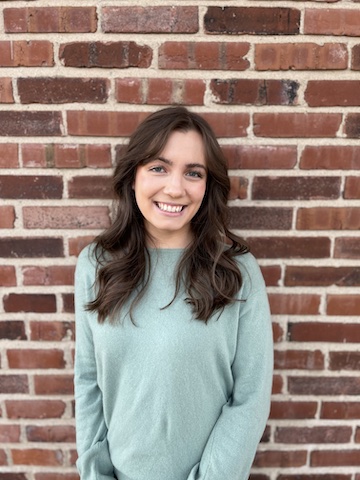-9a5237.jpg)
NLA Stage 4, 5 & 6
September 25, 2023
Here we are – in the 4th and final installment of our Natural Language Acquisition (NLA) series! We will be discussing emergent and developing grammar skills in children who are Gestalt Language Processors. First, a quick review of the 6 stages of NLA.
Stage 1: Echolalia
• Use of individual gestalts learned from either consumed media or individuals within the community (family members, caregivers, therapists, etc.)
• These gestalts are fixed, and their exact production (often including fixed intonational variations) will not change from instance to instance EX: “Let it go!” “Give me more cookies!”
Stage 2: Mitigated gestalts
• This phrase is hallmarked by the combination of gestalts which are already established within the individual communicative repertoire EX: “Let me go,” or “Go give more cookies.”
Stage 3: Single word use
• This phase, which is particularly exciting from a language development standpoint, occurs when the individual begins recognizing words as their own linguistic units as opposed to fixed utterances. This is the first stepping stone toward truly spontaneous and independent communication. EX: “Go,” “More,” etc.
Stages 4, 5 and 6: Emerging syntax and increased sentence complexity
• Hallmarks of these stages include inappropriate syntax use progressing toward complex and appropriate grammar and increased sentence complexity EX: “Let’s give me more cookies,” —> “Go get the toy,” —> “Please give me the toy.”
In Stage 4 of NLA, you will often hear communicators using inconsistently improper grammar. This improper grammar is to be expected in Stage 4 and is a sign that these communicators are flexing those linguistic muscles to produce their own, novel utterances. If you’ll remember from the first Gestalt Language Processing series, therapy with Gestalt Language Processors going through the stages of NLA is all about modeling, not mandating a certain type of language/vocabulary use. Just as with our early stages of NLA, identifying target utterances for modeling first involves a thorough analysis of our client’s spontaneous and naturalistic utterances. A crucial step to identifying which types of phrases and word combinations to model for your clients during your play-based session is to identify, categorize and then analyze the sentence structures used in your clients’ spontaneous speech.
The model most often used for identifying and categorizing these phrases marked by poor grammar is known as Developmental Sentence Types by Laura Lee, first coined in a 1966 publication linked below. For more in-depth information on how to break down utterances by types (noun and noun elaborations, designators and designative elaborations, descriptive words and predictive elaborations, etc.) I recommend checking out the Meaningful Speech Course, as always. The thorough education you’ll receive through the Meaningful Speech Course will cover far more information than I’m able to in a brief blog post.
The coining of DST lead to the development of Developmental Sentence Scoring (DSS), which is a clinical procedure for estimating syntactic development in children’s speech. This method of syntactic analysis was first published in 1971 and the original publication is also linked below for your convenience. The first 3 levels of DSS are associated with Stage 4 of NLA, and the more advanced levels are closely associated with Stages 5 and 6. Luckily, for your convenience, Laura Lee and Susan Carter have also developed a scaled chart with each stage of DSS moving in sequential order of language development. The charts with practice analysis opportunities are included in the Meaningful Speech Course, but you should be able to find the charts themselves with a thorough explanation in the publications linked below for your own personal reference.
As with Stages 1, 2, and 3, when you have identified which types of syntactic utterances are most commonly used in your client’s spontaneous speech, you can then identify the next level up as your target utterance model. These modeling opportunities should, as always, continue to be produced in naturalistic opportunities, through play-based and child-led therapy.
And with that, we conclude our second Gestalt Language Processing series, an overview of the stages of Natural Language Acquisition. If you have questions, comments, or additional resources, please comment below!
Resources:
Developmental Sentence Types (DST): https://pubs.asha.org/doi/10.1044/jshd.3104.311
Developmental Sentence Scoring (DSS): https://pubs.asha.org/doi/10.1044/jshd.3603.315
Meaningful Speech Course: https://www.meaningfulspeech.com/course
Meaningful Speech Course: https://www.meaningfulspeech.com/course
In-Depth Courses about NLA: https://naturalcommunication.myshopify.com/
Additional free resources: https://communicationdevelopmentcenter.com/
About the Author

Marisa Julius is a speech-language pathologist that has worked in both public and private school settings with a focus in pediatric augmentative and alternative communication therapy. She currently works for a private specialized school setting with children 5-21 with complex communication needs and a variety of disorders including Autism Spectrum Disorder, Down Syndrome, Childhood Apraxia of Speech, Language Delays, Reactive Attachment Disorder, and more. She is a Missouri native and earned two Bachelor’s degrees from Truman State University in Communication Disorders and German Studies. She received her M.A. in Communication Sciences and Disorders from Saint Louis University. She considers herself a lifelong learner, and is thrilled to be writing for SLP Toolkit, if only for an additional excuse to read more. In her free time, you can find her cooking, reading, hiking, or showing everyone unsolicited pictures of her dog.



